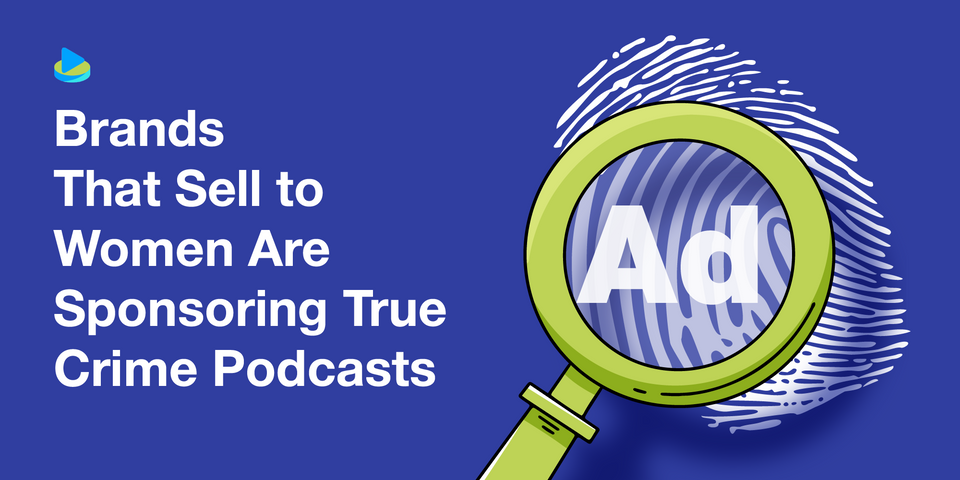True Crime podcasts rank among the most popular podcast categories, particularly in the US, yet they remain surprisingly under-monetized, as highlighted in our one of our previous articles.
It's a well-known fact at this point that the majority of True Crime podcast listeners are women. This strong demographic skew presents a significant opportunity for brands looking to target female consumers. But does Rephonic's podcast sponsorship data support that idea? We had a look.
Note: Our sponsor data skews toward active English-language shows averaging more than 250 downloads per week.
TL;DR:
- True Crime podcast listeners skew heavily female
- Top 20 podcast sponsors are more likely to sponsor True Crime shows
- SimpliSafe is the brand most likely to sponsor True Crime podcast episodes
- D2C wellness brands are capitalizing on audience gender alignment
🔪 True Crime podcast listeners skew heavily female
Our analysis found that 81% of True Crime podcast audiences skew female [1], which closely aligns with previously reported industry figures.
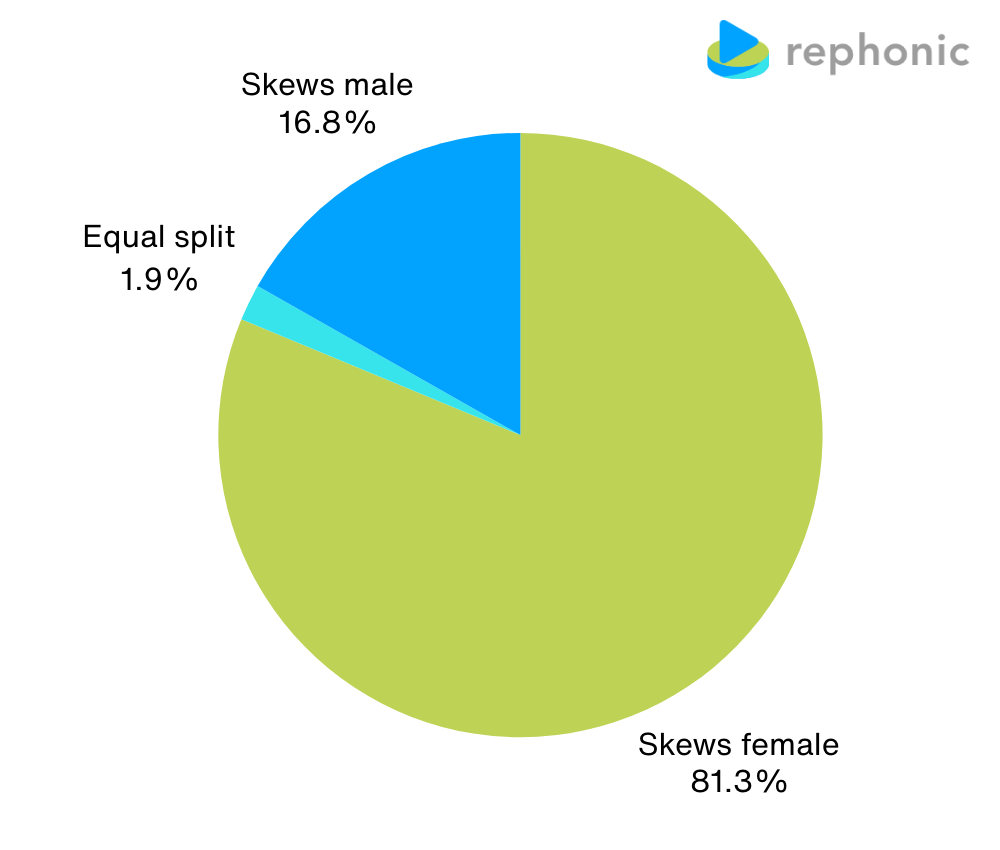
🚨 SimpliSafe is the brand most likely to sponsor True Crime podcast episodes
Next, we examined the brands that most commonly sponsor True Crime episodes [2]. SimpliSafe ranked first, closely followed by June’s Journey.
SimpliSafe is a home security company that specialises in monitoring and alarm systems, so it's the perfect match for the genre.
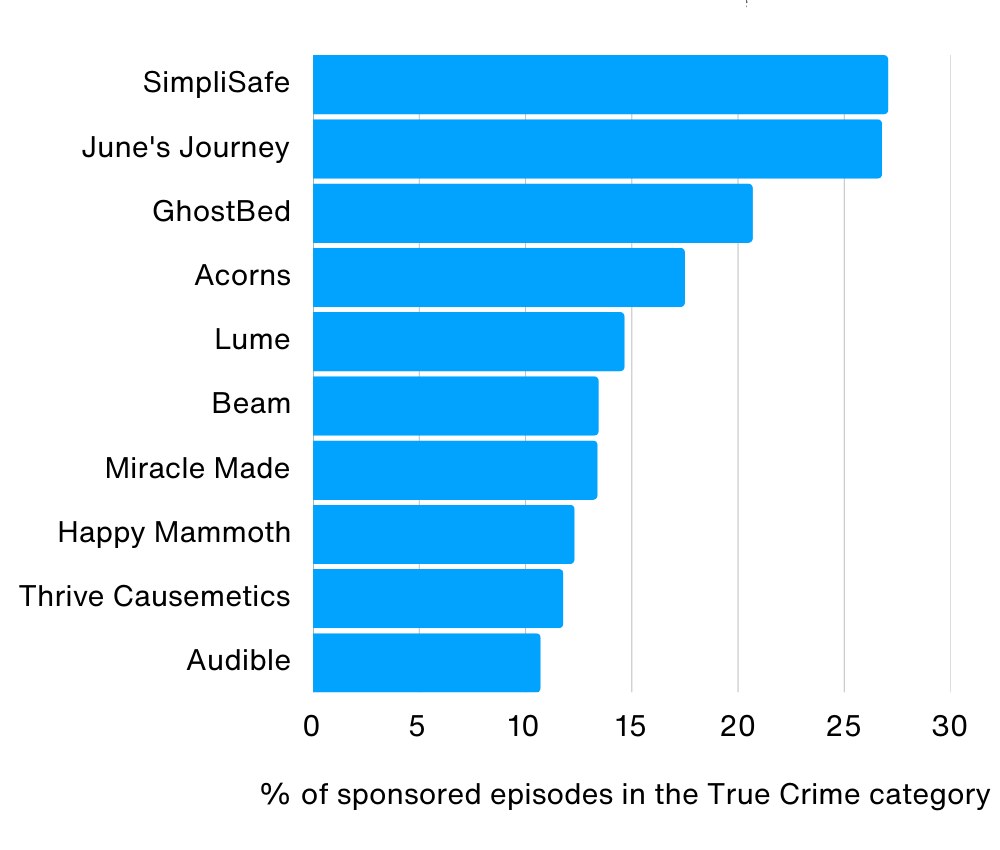
Of all the episodes that SimpliSafe has sponsored, 27% of those are True Crime, which makes it their most heavily sponsored category.
Here are some reasons why the other brands might be choosing to sponsor such a high proportion of True Crime episodes:
June’s Journey: A hidden-object game with a detective theme that appeals to fans of mystery and True Crime.
GhostBed: This mattress and bedding brand targets the anxious late-night audience of True Crime to promote better sleep. Miracle Made is another bedding company in this space.
Acorns: The reason for this sponsorship may not be as obvious. Acorns, an investing app that now redirects to Raiz Invest, might be focusing on different data for their sponsorship decisions.
Audible: The storytelling element aligns with that of True Crime podcasts.
Lume, Beam, Thrive Causemetics, Happy Mammoth: It’s likely that these wellness brands prefer True Crime because their audiences skew female.
💄 D2C wellness brands are capitalizing on audience gender skews
Lume, Beam, Thrive Causemetics and Happy Mammoth are all direct-to-consumer wellness and personal-care brands. We checked their web traffic stats on Similarweb [3] and found that their audiences are estimated to skew female:
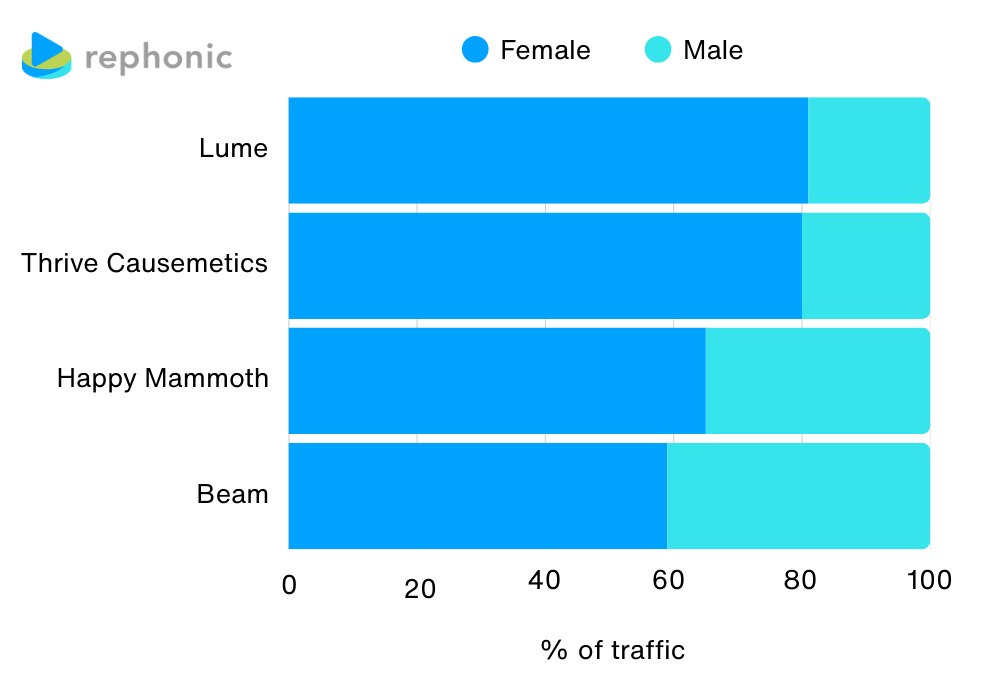
Lume Deodorant notably matches the 81% female audience figure, with Thrive Causemetics at 80%.
Their frequent sponsorships in this area indicate they are getting good returns on their investments, which points to potential sponsorship opportunities for similar brands.
💰 The biggest podcast advertisers are more likely to sponsor True Crime shows
In our dataset, 35% of the True Crime podcasts that we analyzed have secured sponsorships, closely matching the broader podcast industry average of 34%, as noted in our earlier analysis.
Our findings also show that top 20 podcast sponsors are more interested in True Crime content than sponsors in general. True Crime accounts for 3.7% of all podcasts sponsored by the top 20 brands - more than double the 1.4% average across all podcast sponsors.
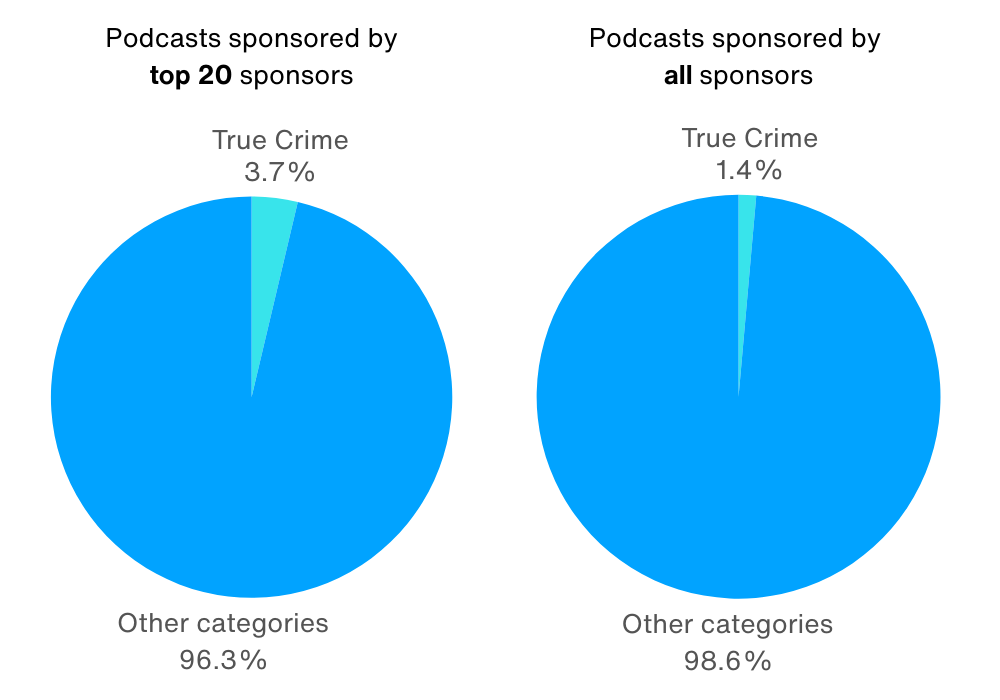
Beyond its strong female following, True Crime attracts a wide audience which makes it a great choice for big consumer brands running brand advertising campaigns, especially since podcast ads are notoriously hard to attribute.
Final thoughts
True Crime podcasts offer considerable potential for brands aiming for both targeted and broader marketing goals. Brands looking to reach female listeners and those planning brand advertising campaigns may want to consider sponsoring this under-monetized podcast category.
Looking to book podcast ad spots?
Rephonic is the most complete podcast database for PR teams, marketers, and founders looking to book high-impact guest appearances and ad spots. Access listener numbers, contact info, audience demographics and more for over three million podcasts.
Footnotes
[1] Rephonic estimates the gender skew of a podcast audience by analyzing the names of listeners to guess their gender. Our data is therefore not 100% accurate but rather a best guess. We believe the error to be low when taken in aggregate.
Our gender skew metric is only applied to shows with a large enough audience that we feel confident in making a prediction, so results may be biased towards larger shows.
[2] Rephonic analyzes transcripts to find sponsor names and there may be variations in how the sponsor names have been transcribed. We have made a reasonable attempt to account for these variations, but our data may not be 100% accurate.
[3] Similarweb uses demographic data (such as age and gender) drawn from hundreds of thousands of internal analytics accounts, combined with insights from a network of contributors. Together, these sources enable Similarweb to build audience profiles and map digital user journeys at scale.

